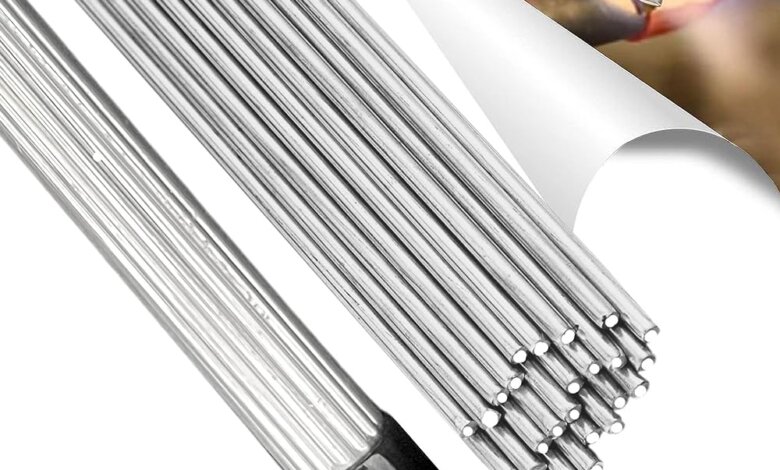What does E7018 stand for?

Welding is critical in many industries, from construction and manufacturing to automotive repair. E7018 is one of the most common welding electrodes used. Welders must be conversant with E7018 to make informed choices with the welding materials and techniques they use. In this article, we will simplify the 7018 welding rod designation, tell its importance as well and look into its applications, advantages plus best ways of using it.
What does the E stand for in E7018?
“Electrode” is what the “E” in the E7018 welding rod stands for. This is a component of the common classification scheme for stick welding, or shielded metal arc welding electrodes.
E: E is the abbreviation for the electrode. This is a quick way to tell that this rod is the electrode you use for welding.
70: The first two numbers (70) are the minimum tensile strength of the weld metal thousand pound-force per square inch E7018 except the weld metal has a minimum tensile strength of 70,000 psi. Their high tensile strength renders them suitable for structural welding and other tasks that demand a durable weld.
1: The welding position in which the Electrode may be used. The digit 3 means that E7018 electrodes work in all positions, including flat, horizontal, vertical and overhead. Among welders, this versatility is one very good reason why E7018 holds a firm place.
8: Shows that the electrode is coated with iron powder, low in hydrogen, which promotes high arc stability, little spatter, and a smooth weld bead.
Breaking Down the E7018 Designation
Welders can better grasp the characteristics and appropriate uses of various rods by using the standardised method for welding electrode classification that the American Welding Society (AWS) has developed. In this system, the designation E7018 is present. Let’s examine each part of this appellation in detail:
Significance of E7018 Welding Rod
The welding industry holds E7018 electrodes in high regard due to their exceptional mechanical qualities, adaptability, and user-friendliness. The following are some main factors that make E7018 electrodes important:
- High Tensile Strength: E7018 welds have a tensile strength of 70,000 psi, which makes them tough and long-lasting for use in crucial applications such as pressure vessels, bridges, and structural welding.
- Low Hydrogen Content: The coating’s low hydrogen content lessens the possibility of hydrogen-induced cracking, which could jeopardise the weld’s integrity. This attribute is especially crucial for welding materials that are prone to cracking, such as high-strength steel.
- Versatility: E7018 electrodes offer versatility for a range of welding tasks, as they can be utilised in all welding positions. Because of their adaptability, they are the preferred option for welders working on intricate structures with difficult angles.
- Smooth Arc and Minimal Spatter: The E7018 electrodes create a stable, smooth arc with little to no spatter, which makes the welds cleaner and requires less cleanup after the weld. This feature improves the quality and effectiveness of the welding process.
Applications of E7018 Welding Rod
Welding rod 7018 is employed in many different sectors for a variety of purposes. Typical applications include the following:
- Structural welding is the joining of metal parts to create useful products such as buildings, and bridges among others. E7018 electrodes are particularly good at this because they have a high tensile strength which allows them to create very strong welds while being both reliable and sturdy due to not carrying extra hydrogen’s weight.
- The E7018 rods are good for welding pressure vessels because they are designed with a low hydrogen-covered electrode, a factor that is very important in ensuring there is safety as well as performance.
- The shipbuilding industry often uses E7018 electrodes to weld different parts of ships and other marine structures, as they possess the capacity to make strong welds that are resistant to corrosion, thus enabling marine vessels to last longer.
- Pipeline Welding: Beside, E7018 electrodes are utilized in pipeline welding whereas, secure and leak-free welds are mandatory to facilitate safe conveyance of liquids and gases.
- E7018 electrodes are the most commonly used electrodes for general fabrication and repair such as welding heavy equipment, machinery, automotive components etc.
Best Practices for Using E7018 Welding Rod
When using E7018 electrodes, it’s crucial to adhere to the following best practices for optimal results:
Proper Storage: Keep E7018 electrodes in a dry place to avoid them absorbing moisture. Absorbed moisture can cause hydrogen to be absorbed too resulting in an increased likelihood of hydrogen-induced cracking. For this reason, electrodes should be kept either in sealed containers or electrode ovens to maintain the low hydrogen properties.
Correct Amperage Settings: For the E7018 electrode’s particular diameter, use the suggested amperage values. To achieve optimal penetration and bead shape and a strong, clean weld, the electrode must be run at the proper amperage.
Preheat and Interpass Temperature Control: The risk of cracking can be decreased for thicker materials or high-strength steels by heating the base metal beforehand. Maintaining the integrity of the weld also requires managing the interpass temperature in between weld passes.
Proper Technique: To guarantee appropriate fusion and penetration, maintain the optimal electrode angle and travel speed. It is usually advised to use a small drag angle (5–15 degrees) with E7018 electrodes.
Clean Surface: Make sure there are no impurities, such as paint, oil, or rust, on the welding surface. Clear surfaces lessen the possibility of flaws and enhance the quality of the weld.
Advantages and Disadvantages of E7018 Welding Rod
E7018 electrodes have certain drawbacks in addition to their many benefits. Welders can utilise this knowledge to make more educated judgements regarding how they use these.
Advantages:
- High Strength and Ductility: E7018 welds have exceptional mechanical qualities for demanding applications since they are robust and ductile.
- Low Hydrogen Content: By reducing the possibility of hydrogen-induced cracking, the low-hydrogen coating protects the integrity of the weld.
- All-Position Welding: E7018 electrodes are versatile enough to be used for a wide range of welding tasks because they can be used in all locations.
- Smooth Arc and Minimal Spatter: Cleaner welds and less post-weld cleanup are the results of the stable arc and minimal spatter formation.
Disadvantages:
- Moisture Sensitivity: To preserve its low-hydrogen characteristics, E7018 electrodes must be handled and stored carefully due to their sensitivity to moisture.
- Increased Cost: Because of its unique coating and performance attributes, E7018 rods may be more costly than some other electrodes.
- Needs Technique and Skill: Using E7018 electrodes correctly requires experience and the right technique to get the best results. To get proficient with them, beginners might need to practise.
Conclusion
The E7018 welding electrode is a versatile and reliable choice for a wide range of welding applications. Because of its low hydrogen concentration, high tensile strength, and all-position versatility, it is the preferred electrode for pressure vessels, shipbuilding, structural welding, and other applications. Welders can produce robust, spotless, and long-lasting welds by knowing what E7018 stands for and adhering to recommended methods.
To Read more ( Click here )



